Hanuman- The Pranic Human Force
Views: 36
Views: 36
As per wiki, Dhana Trayodashi (or Dhanteras or धनत्रयोदशी) is the first day of the Indian Diwali and Nepalese Tihar Festival. The festival is known as “Dhanatrayodashi” or “Dhanvantari Trayodashi”. It is celebrated on the thirteenth lunar day of Krishna Paksha (dark fortnight) in the Vikram Samvat Hindu calendar month of Kartika month.
This day is also celebrated for Lord Dhanvantari (Deity who rules Ayurveda) and worshipped on the occasion of Trayodashi, usually, this day is called Dhanvantari Trayodashi. Dhanvantari is considered to be the teacher of all physicians and the originator of Ayurveda.
‘Dhan’ means wealth and ‘Teras’ refers to the thirteenth day of the moon cycle on the thirteenth day of Kartika Krishna Paksha. On this auspicious day, Goddess Laxmi, Lord Dhanvantri and Lord Kuber are worshipped in sthir Lagna at evening time. Traditionally it is considered as to be good in Hindus to buy gold and silver jewelry or utensils as they are karka for Vaibhav.
If we See background history from our Vedic Scriptures (Puranas), root of the Dhanteras belong from the Samudra Manthan, It is believed that on this day, Goddess Lakshmi emerged from the ocean along with other precious treasures and pieces of jewelry, during Churning of Ocean. According to the Bhagwat and Visnu Purana, Lord Dhanvantri also emerged from the sea with the pot of Amrit for distributing it to the Devtas. Lord Dhanvantri is another form of Lord Vishnu and also worshipped on this day along with Goddess Lakshmi and Lord Kuber for the good health, wealth, and wellbeing.
Below are Detailed info on Dhanteras Puja Vidhi and Muharat :

Dhanteras Puja on Monday, November 5, 2018
Dhanteras Puja Muhurta – 18:06 to 20:01
Pradosh Kaal – 17:29 to 20:07
Vrishabha Kaal – 18:06 to 20:01
According to Drikpanchang, Lakshmi Poojan on Dhanteras should be done during Pradosh Kaal after sunset and approximately lasts for 2 hours and 24 minutes when Sthir Lagna (Fixed Signs) prevails, Sthir means fixed, not movable as in Sthira Lagna goddess Laxmi sits and stays in your home.Today Sthira Lagna will rise after 18:05:38 (Taurus Lagna), hence this time is the best for Dhanteras Pujan for Laxmi poojan.
But before that there we need to light 13 or 1 lamp in the house to keep away the evil and let the good light come in in the form of good health and wellbeing with Goddes Laxmi and Dhanvantri.
Dhanteras has nothing to do with the wealth, but It is more about the health and well being of the house, what happens when “Ashta Laxmi” comes in the house with lord Dhanvantri which brings good health, well being and overall happiness for the whole family members. ‘
” This is explained in the story of the prince and his new wife, which is said to have happened on this day centuries ago. The prince, his new wife and the serpent The 16-year-old son of King Hima was predicted to die on his fourth day of marriage – on Dhanteras – by snake bite.
But instead of dying, on that date his wife decided she would not let him go to sleep. She laid out all her ornaments as well as pots of gold and silver coins at the entrance to their bedroom and lit lots of lamps.
She told him stories and sang songs to keep him awake that night and when the God of Death, Yama, came disguised as a snake, he was so dazzled by the glittering precious metals and lights that he climbed on top of the coins and listened to the stories instead. By morning, rather than killing the prince, he slithered away silently because he had missed the chance. The prince was saved by his bride after she baffled the snake with her wealth.”
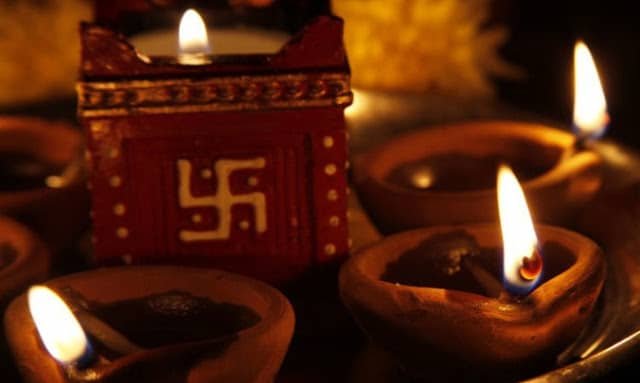
After placing this earthen lamp recite the following mantra and offer honor and respect and pray to the Lord Yama for well being of the family members:
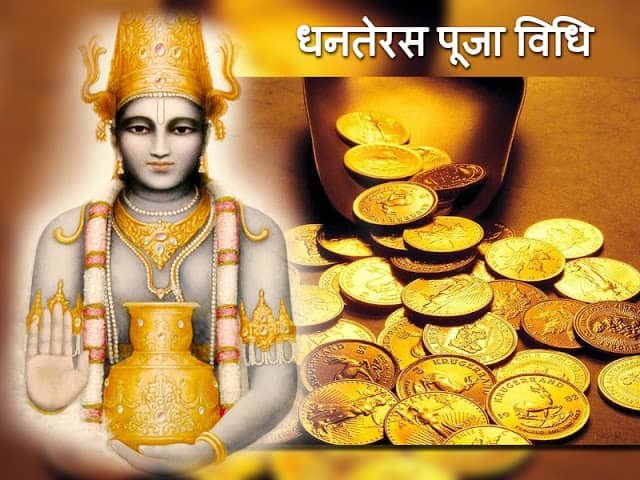
After lighting earthen lamp for Lord Yama, one should start dhanwantari pooja in your pooja room. Lord Dhanwantari is diety of the Ayurveda, form of Lord Vishnu, as he has emerged on this day so he should be worshipped in Dhanteras. Give bathing and anointing the idol of Lord Dhanwantari with vermillion, nine varieties of grains are offered to the Lord.
“Om Namo Bhagavate Maha Sudharshana Vasudevaya Dhanvantaraye; Amrutha Kalasa Hasthaaya Sarva Bhaya Vinasaya Sarva amaya Nivaranaya Thri Lokya Pathaye Thri Lokya Nidhaye Sri Maha Vishnu Swarupa Sri Dhanvantri Swarupa Sri Sri Sri Aoushata Chakra Narayana Swaha”
Meaning:
“O Lord Dhanwantari! I offer this recitation in your lotus feet. Please give us good health.”
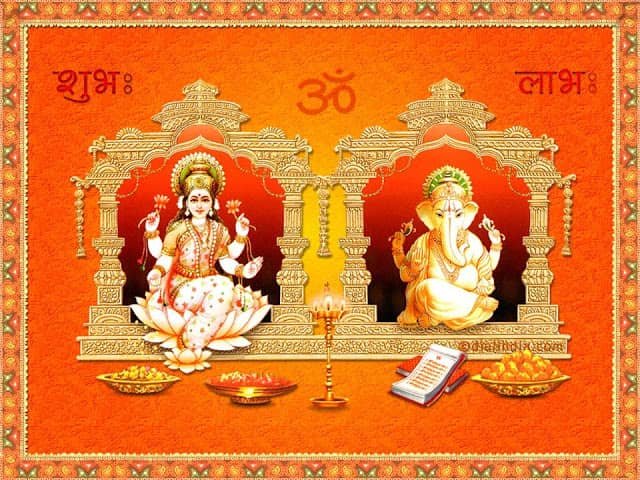
After Dhanwantari pooja one must do panchopchar pooja of Lord Ganesh and Goddess Lakshmi with Kubera.In the evening, all family members should gather and start the prayer.Before Starting pooja give him a bath and anoint him with sandal paste. A red cloth is offered to the Lord and then fresh flowers are showered on the idol of Lord Ganesha. Devotees can also chant the mantra and take his blessings before starting the rituals of Dhanteras.
Chant the following mantra:
निर्विघ्नं कुरु मे देव सर्वकार्येषु सर्वदा ॥
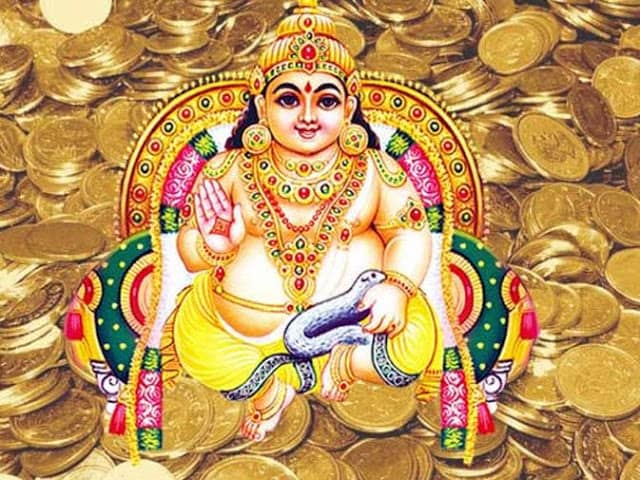
Lord Kuber should be offered flowers, incense, fruits and sweets, and diya and after that chant the following mantra:
Meaning:
Kubera, the lord of yakshas, bless us with wealth and prosperity.
Now, worship Goddess Lakshmi in Sthir Kaal in Vrishabha Kaal @18:05 to 20:01
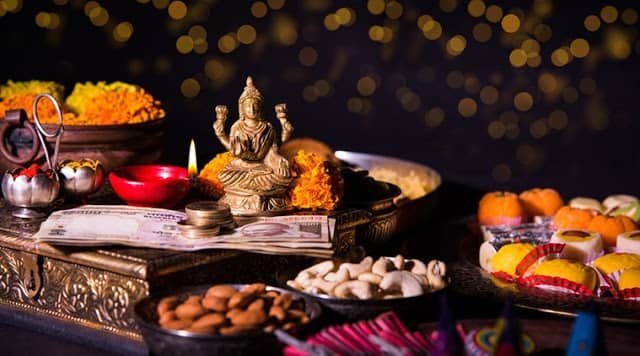
In Dhanteras, During the Pradosh Kaal, which is the time after sunset and lasts for about two and a half hours, Goddess Lakshmi is used to worshipped on Dhanteras. Before starting this pooja ritual, one should take a piece of new cloth, spread with a handful of grains in the middle of the cloth. The cloth should be spread on a raised platform. A kalash half filled with water (mixed with Gangajal), betel nut, a flower, a coin and some rice grains is also kept together.
One can also keep mango leaves in the kalash. According to the rituals, a lotus is drawn with Haldi (turmeric) over the grains and the idol of Goddess Lakshmi is kept over the grains. Light a lamp, offer flowers, haldi, Vermillion to the Goddess Lakshmi, Lord Ganesha and to the kalash then chant the below-mentioned mantra:
After this, take a plate and bathe the idol of Lakshmi with panchamrit (mixture of milk, curd, ghee, butter and honey).
Views: 39
Pranam to all the beautiful seekers,
V
Views: 9

Let me share with you a glimpse of the power of “Vedic Etymology” which will certainly put you in amaze.
From past many years, I had been emphasizing upon “niruktam”- the vedic etymology which helps us understand the deeper, absolute and true meanings of words. Every letter in the Devnagri varnmala (alphabetic system) has a meaning and it represents a system inside you. The vowels (swara) and consonants (vyanjan) has a meaning leading to a deeper understanding of the whole of creation and forms the connecting links between the creations that we see in this world.
विश in devnagri means the lotus stem which in sanskrit is written as “बिस”, and आल is आ (through, से) + आलय (abode) which means abode. So, we can join the meanings and understand that “Vishal” means “to the abode through lotus stem”, which is also explained beautifully in Lalita Sahastranam as “mahashaktih kundalini bistantutaniyasi”, verse 92. This signify the expansive form of the energy which is multi-dimensional with its expansion in each individual and the creation.
Now, let’s take another word. Same way the word विश्व is designed:
Views: 36
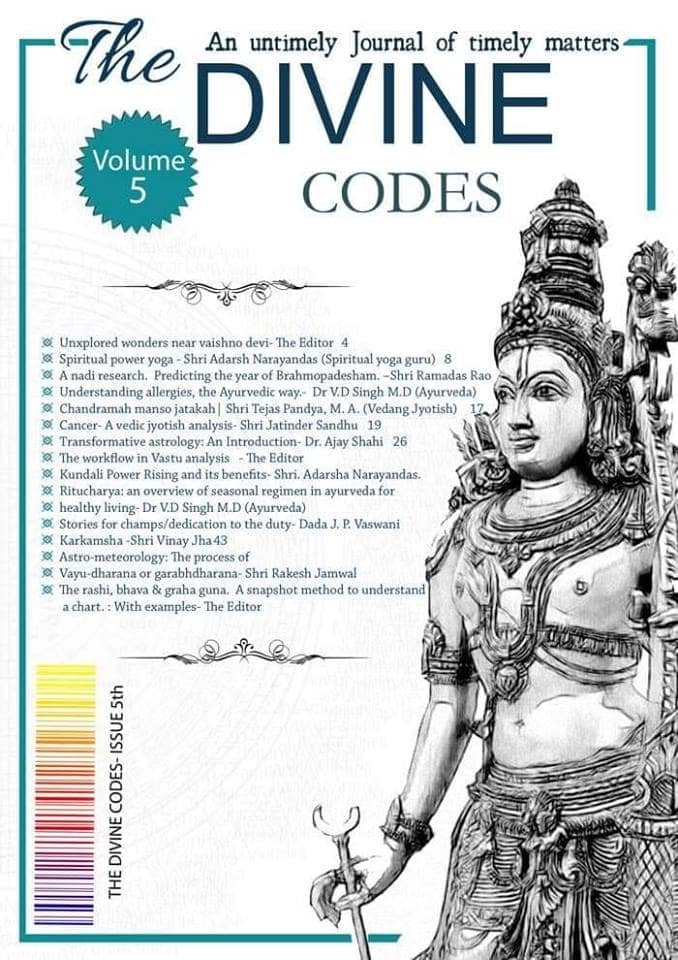
Views: 66
Webinar Fee: Rs 350/-
For Any Details or Query for Registration, you can Contact: +91-7006278941
All those who are interested in learning medical astrology can join this Paid Webinar on Medical astrology for the understanding seat of the disease via different Astrological Methodologies and principals. Session Duration would be around 2 Hours.lectures would cover the entire gamut of basics to advanced concepts as required for identifying the diseases from the horoscope. The course can be in English/Hindi depending on the participants enrolled.
Video recording of the session Would be provided after the session but first, we need to understand
What is Medical Astrology?
Understanding the Content of the webinar
In Real Life, astrology is related to every simple aspect of life. Thus it is important for people to have the perfect idea of diseases. These predictions are important for astrology that can also predict the condition of diseases that have a chance of health problems. It is also important to have health situations related to those of medical astrology.
Stages of predicting health conditions through astrology
These process of predicting is done through various tests that help in understanding the knowledge and events to occur in the life of that person. This can only be predicted by assessment of all the positions of planets and other heavenly bodies. Thus just like any other important events, disease and health problem are also associated with astrology. Medical astrology is an important sector of astrology that can be used to avoid chances and risks of having diseases as much as possible.
Prediction of Astrological condition with medical benefits
The most important part of the disease and sickness prediction through astrology is the preparation of the planetary position. Each high planetary position depicts particular risks of a disease and then comes the charting of the associated conditions.
Best wishes for the session
For Register yourself in webinar click on the below link:
Views: 12
Monsoon is a season of romance. The cool breeze and damp smell of the earth after a long roasting summer turn the mind ecstatic. Jumping in the puddles, dancing in the rain, going for a long drive etc add to the pleasure. However, it continues to remains so until an individual holds good health as rainy season brings a plethora of diseases along with. It has been observed that there is an increased occurrence of air and water-borne diseases in the rainy season.
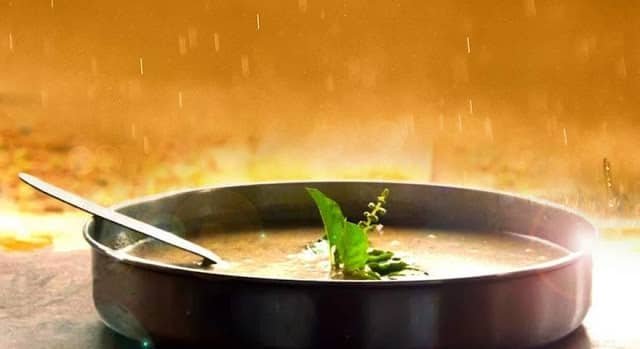
Monsoon season is categorized as Varsha Ritu in Ayurvedic texts. It ranges from the month of Shravana toBhadrapada (Mid July to Mid September) and denotes the onset of Visarga Kala or Dakshinayana or Southern Solstice. During this season, the sky is covered by clouds and rains occur without the thunderstorm. The ponds, rivers, etc are filled with water.
Ayurveda describes the aggravation of Vata and accumulation of Pitta in Varsha Ritu. Constant raining, moisture in the atmosphere and cold weather results in aggravation of Vata which was accumulated during the dry and dehydrating heat of the summer; while Pitta accumulates following the conducive acidic conditions of the atmosphere as the predominant Rasa is Amla (sour) and Prithvi and Agni are predominant Mahabhutas in the rainy season.
According to Ayurveda, Agni is responsible for the digestive & metabolic activities of the body. During monsoon, the digestive fire or Agni weakens, leaving digestive system most vulnerable to various ailments. Diet thus followed during this season should balance the vitiated doshas and stimulate Agni to perform proper digestion.
Monsoon is the time when body’s immunity drops, thus proper care should be taken to prevent possible illnesses like general debility, blood and skin related problems, pain and swelling of joints, ringworm, fever, malaria, dysentery etc. In addition, other virus and bacteria related diseases may also emerge.
Here are few simple guidelines recommended by Ayurveda that should be followed during the monsoon season. By following these dos and don’ts, you’ll be able to celebrate the monsoons without fearing its adverse impact –
LIFESTYLE MODIFICATIONS
Views: 4
What is Heart Attack ?
If you believe that you are having the symptoms of a heart attack, please call 911 immediately and seek medical attention. The heart is a muscle like any other in the body. Arteries supply it with oxygen-rich blood so that it can contract and push blood to the rest of the body. When there isn’t enough oxygen flow to a muscle, its function begins to suffer. Block the oxygen supply completely, and the muscle starts to die.
Heart muscle gets its blood supply from arteries that originate in the aorta just as it leaves the heart. The coronary arteries run along the surface of the heart and supply oxygen-rich blood to the heart muscle. The right coronary artery supplies the right ventricle of the heart and the inferior (lower) portion of the left ventricle. The left anterior descending coronary artery supplies the majority of the left ventricle, while the circumflex artery supplies the back of the left ventricle. The ventricles are the lower chambers of the heart; the right ventricle pumps blood to the lungs and left pumps it to the rest of the body.
What Causes a Heart Attack ?
Over time, plaque can build up along the course of an artery and narrow the channel through which blood flows. Plaque is made up of cholesterol buildup and eventually may calcify or harden, with calcium deposits. If the artery becomes too narrow, it cannot supply enough blood to the heart muscle when it becomes stressed. Just like arm muscles that begin to ache or hurt when heavy things are lifted, or legs that ache when you run too fast; the heart muscle will ache if it doesn’t get adequate blood supply.
This ache or pain is called angina. It is important to know that angina can manifest in many different ways and does not always need to be experienced as chest pain. If the plaque ruptures, a small blood clot can form within the blood vessel, acting like a dam and acutely blocking the blood flow beyond the clot.
When that part of the heart loses its blood supply completely, the muscle dies. This is called a heart attack, or an MI – a myocardial infarction (myo=muscle +cardial=heart; infarction=death due to lack of oxygen).
Picture of Heart Attack (Myocardial Infarction) Picture of Heart Attack (Myocardial Infarction)

At the time of his death Saturn is in transit on Sagittarius ,rahu in cancer and ketu in Capricorn ,sun in Aquarius ,Mercury /Venus in Pisces,Moon/Jupiter in Libra,mars in Scorpio. Dasha Mercury -Saturn .Mercury is lord of 2nd a marak.
Views: 9
Saturn was placed in 12th from the Mars and Jupiter placed in the 10th from it saving the Mars energy for betterment and Controlling the energy and bringing mars and Ketu energy into a balanced Action in society. But the main problem will come when Mars will gather enough energy in 60 days of 8 retrogression phases and its return will be deadly with South Node Ketu around 8 Degree in Uttrashada Nakashtra around 19th of September and up to 26th of September can bring much chaos. fear and debates like a situation in Society, till 26th of September Mars, will be in close association with South node Ketu, Sun in Pisces Navamsa ( The Jala Tattva amsa), it will bring much of ego and arrogance among people.
After the Comeback of Mars, the retrogression energy of mars will become immensely powerful for a period of the 1 month until and unless it will crosses over the 10 Degree of Capricorn with Ketu in Sharvana nakshatra. The planetary war between Mars and Ketu was already started from the 28th of August when Mars turns direct after gaining Maximum chesta bala ( around 48 Chesta, from the Sun ) via Retrogression, that time Sun and Mars having the relation of the 6/8 and the energy of Mars will settle down when Sun will be in Virgo, trine to Mars after crossing few degrees.
Question is why it is so? Because Mars is Agni Tattva Graha and Retrogression is an astronomical phenomenon occurs between an alignment of the three planets forming an energy relation between the Sun, Earth and The planet who is going to become retrograde and this Mars Retrogression has 8
States which was started from the 2nd May onward and it will complete these 8 phases of retrogression for the duration of 60 Days from 27th of June 2018 onward up to 28th of August.
During these phase People will face health issues because of the Pittha rog, i.e Stomach upset, indigestion problem, Jwar ( Viral Fevers), Jatha Agni Fire will rise up and people will start eating lots of Fiery food and fried foods and result will be the problem of Acidity and Indigestion related problem.The main issue will be people will start fighting with each other over small arguments or issues due to ego conflicts just to prove their points true or correct.
People with Capricorn Moon sign and Lagna of Gemini, Aquarius, Aries, Scorpio, Cancer, Virgo need special attention till 26th of September 2018. People running Mars or Ketu dasha need special attention not to indulge in fights or any debates.I hope this will clear up what it is about Mars and Ketu conjunction over Capricorn which is a sign of Bhoomi tattva so any matters related to cheating and fraud in money laundering will pick up like a fire and will be getting caught by the policing energy of mars. So be aware do not frauds in the matters of money and job, Saturn is behind this combination and it is also direct, so he is watching your actions.
Bhoomi is all about land-related issues, I,e Floods, Too much fire, too much heat and warm weather, people of South and North of india need special attention for any sort of Weather-related issues till 5th of November 2018. As per Brihat Samhitam When mars begin his retrogression in the star of Uttaraashda after being released from the eclipse in the star of poorva or uttar phalguni and get eclipsed again in the star of rohini it can afflict the three world with untold sufferings.
Views: 116
Table of Contents

 Vata dosha accumulates during the dry or dehydrating heat of the summer. In rainy season, due to constant raining, the moisture and cold weather aggravates Vata. The apetite (Agni) becomes low and causes indigestion.
Vata dosha accumulates during the dry or dehydrating heat of the summer. In rainy season, due to constant raining, the moisture and cold weather aggravates Vata. The apetite (Agni) becomes low and causes indigestion.
The following table summarizes the tastes which are more powerful and hence can be included in the diet in each of the six seasons.
Note: Article is Originally Written by Dr VD Singh and Author can be reachable at Ayurcare.
Views: 119